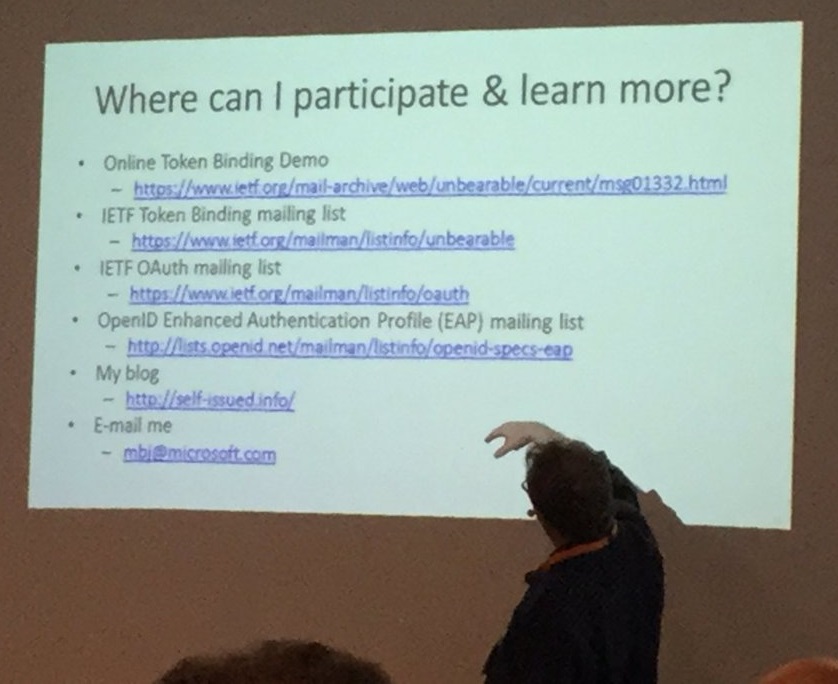 JSON Web Tokens (JWTs) and the JSON Object Signing and Encryption (JOSE) functions underlying them are now being widely used in diverse sets of applications. During IETF 98 in Chicago, we discussed reports of people implementing and using JOSE and JWTs insecurely, the causes of these problems, and ways to address them. Part of this discussion was an invited JOSE/JWT Security Update presentation that I gave to two working groups, which included links to problem reports and described mitigations. Citing the widespread use of JWTs in new IETF applications, Security Area Director Kathleen Moriarty suggested during these discussions that a Best Current Practices (BCP) document be written for JSON Web Tokens (JWTs).
JSON Web Tokens (JWTs) and the JSON Object Signing and Encryption (JOSE) functions underlying them are now being widely used in diverse sets of applications. During IETF 98 in Chicago, we discussed reports of people implementing and using JOSE and JWTs insecurely, the causes of these problems, and ways to address them. Part of this discussion was an invited JOSE/JWT Security Update presentation that I gave to two working groups, which included links to problem reports and described mitigations. Citing the widespread use of JWTs in new IETF applications, Security Area Director Kathleen Moriarty suggested during these discussions that a Best Current Practices (BCP) document be written for JSON Web Tokens (JWTs).
I’m happy to report that Yaron Sheffer, Dick Hardt, and myself have produced an initial draft of a JWT BCP. Its abstract is:
JSON Web Tokens, also known as JWTs [RFC7519], are URL-safe JSON-based security tokens that contain a set of claims that can be signed and/or encrypted. JWTs are being widely used and deployed as a simple security token format in numerous protocols and applications, both in the area of digital identity, and in other application areas. The goal of this Best Current Practices document is to provide actionable guidance leading to secure implementation and deployment of JWTs.
In Section 2, we describe threats and vulnerabilities. In Section 3, we describe best practices addressing those threats and vulnerabilities. We believe that the best practices in Sections 3.1 through 3.8 are ready to apply today. Section 3.9 (Use Mutually Exclusive Validation Rules for Different Kinds of JWTs) describes several possible best practices on that topic to serve as a starting point for a discussion on which of them we want to recommend under what circumstances.
We invite input from the OAuth Working Group and other interested parties on what best practices for JSON Web Tokens and the JOSE functions underlying them should be. We look forward to hearing your thoughts and working on this specification together.
The specification is available at:
An HTML-formatted version is also available at:
 The eighth working draft of the W3C Web Authentication (WebAuthn) specification has been published. The WebAuthn working group plans to submit this draft for approval by the W3C Director (Tim Berners-Lee) to become a W3C Candidate Recommendation (CR), after a few days’ review by the working group.
The eighth working draft of the W3C Web Authentication (WebAuthn) specification has been published. The WebAuthn working group plans to submit this draft for approval by the W3C Director (Tim Berners-Lee) to become a W3C Candidate Recommendation (CR), after a few days’ review by the working group.



